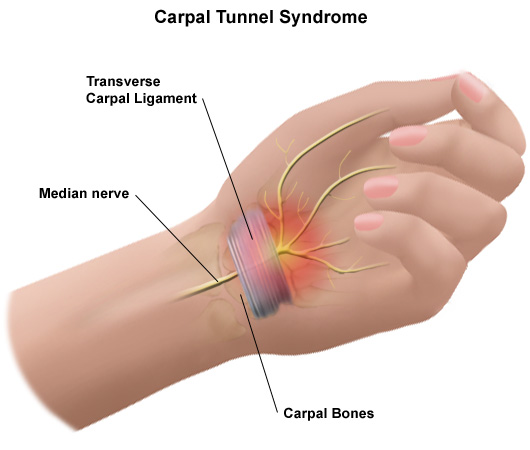Carpal Tunnel Syndrome
 Carpal tunnel syndrome is a condition in which the median nerve — which originates in the cervical spine and runs through the arm — is compressed as it passes through the carpal tunnel in the wrist to the hand. The carpal tunnel is formed by the bones on the bottom of the wrist and a ligament across the top of the wrist.
Carpal tunnel syndrome is a condition in which the median nerve — which originates in the cervical spine and runs through the arm — is compressed as it passes through the carpal tunnel in the wrist to the hand. The carpal tunnel is formed by the bones on the bottom of the wrist and a ligament across the top of the wrist.
The median nerve provides sensory and motor functions to the thumb, index, and middle fingers of the hand. When the median nerve is compressed, symptoms can include difficulty making a fist or gripping objects, pain and/or numbness in the hand, the sensation of electric shocks radiating from the wrist to the hand, and burning or tingling sensations.
- Learn more about carpal tunnel syndrome
- Diagnostic tests
Treatment
If the diagnostic tests show that there is nerve compression, surgery may be recommended. Surgical treatment involves enlarging the carpal tunnel to decrease the pressure on the nerve, and it is done on an outpatient basis with both local anesthesia and sedation medication. Non-surgical treatment often includes wearing a splint during the night to keep your wrist in a neutral position. Steroid injections in or near the carpal tunnel may relieve symptoms for a long time.